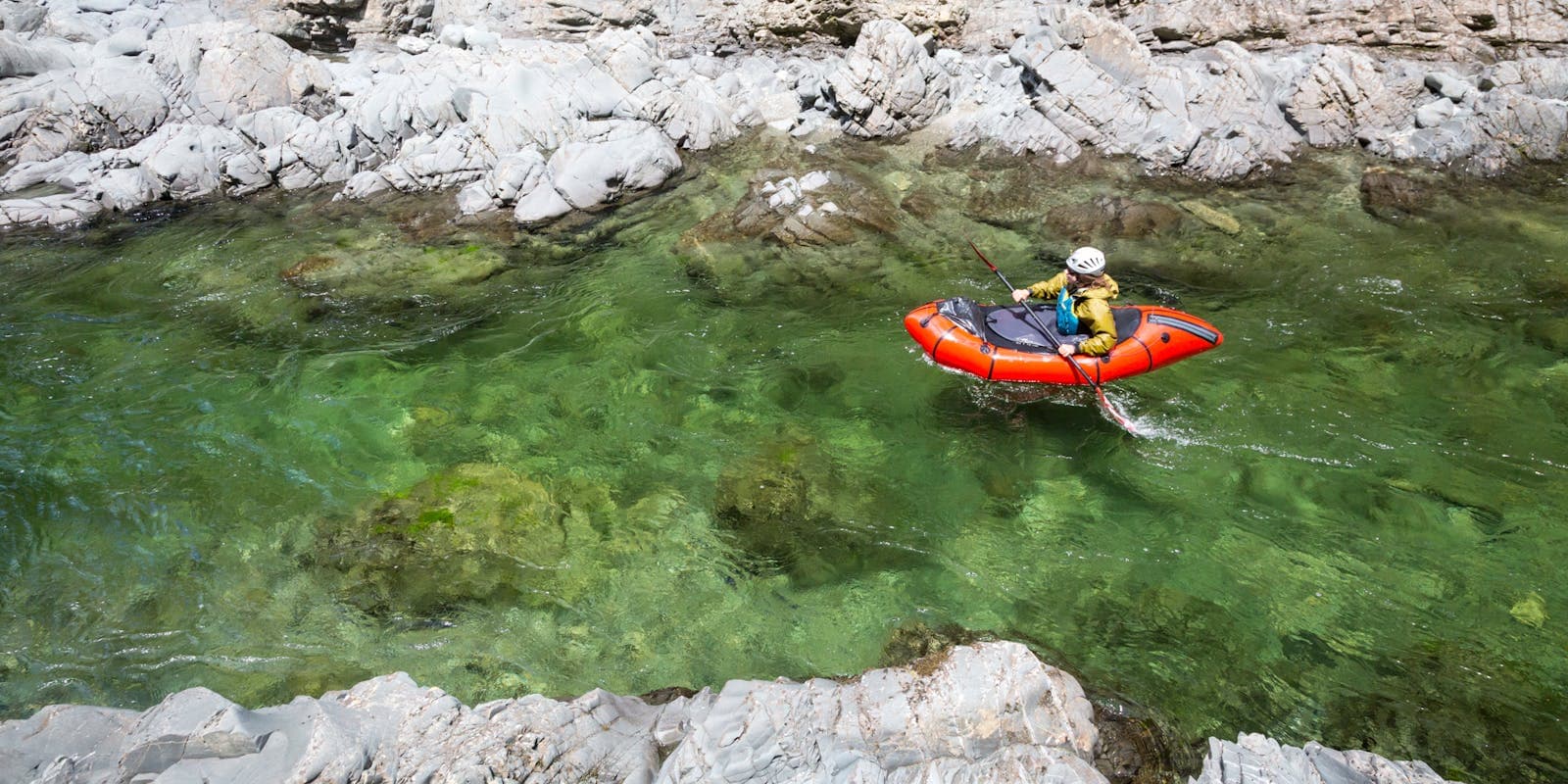Care and Maintenance
Alpacka Rafts are low-fuss and low-maintenance. Our packrafts are designed for people who are hard on gear. Part of our goal has been to build packrafts that don’t need a lot of attention either on the river or off it. Your packraft will endure a lot of abuse. Very little is needed to keep your packraft in good shape from year to year. However, simple preventative care will lengthen its life and keep it beautiful.

In The Field
- Other than Cargo Fly Zipper care, very little needs to be done to keep your packraft in good working order while in the field.
- Generally attaching your packraft to your back (or bicycle) in a way that it can fall off (this has happened) or is subject to excessive abrasion.
At Home - Cleaning & Storage
- Clean Your Packraft: Washing with mild dish soap helps keep your boat clean and prevent the spread of invasive species across waterways.
- Air Dry Your Packraft: If your boat is stored wet, it will damage the Cargo Fly zipper and can develop a strong cat urine odor which can be very difficult to remove. In addition, a wet packraft can spread invasive species. We recommend hanging your boat to dry after every trip before storing.
- Storing Your Packraft: Keep your packraft in good condition and like new. After your packraft is clean and dry, we recommend storing your packraft in a cool dry place with good air flow. Hanging, loosely rolling or folding are good methods. We do not recommend storing your packraft in its stuffsack. If rolled too tight and put back in your stuff sack, discoloration and staining can occur on new or like new packrafts. To reduce UV aging, do not store your packraft in direct sunlight.
- We recommend periodic Seaworthiness Checks: These should be done when pulling the boat out after a period of storage, after any non-design use (ex: using it as a tarp or gear-sled), or after any event that might have damaged the boat.
- Do not use “UV-Protectant” or similar sprays on your packraft: These sprays create a hard outer coating that prevents repair materials and glue from sticking to the packraft. If you do accidentally use a UV protectant spray on your boat, it will wear off after use but you will have trouble with repairs or gluing any attachments to the boat until it does wear off.
Cargo Fly
You must clean, dry, and lubricate your Cargo Fly Zipper after every trip and often while in the field!
MAINTENANCE KIT:
You will need a small (about 3×3″) clean rag, zipper lubricant, and a small brush. You can use old t-shirts to make new rags. Old toothbrushes make great cargo fly brushes. Keep your kit with you in the field and maintain often.
CLEANING:
If you are having trouble getting your zipper to close, it is most likely due to an obstruction in the chain (i.e. the teeth). Therefore, you need to keep your zipper chain clean and free of sand, dirt, and debris. Because lubricant attracts sand, we do not recommend applying lubricant direct to the chain. If your zipper needs cleaning, start with a small brush and use warm soap and water for more difficult cleaning.
LUBRICATION STEPS:
Your zipper should always run smooth and easy. If your zipper is difficult to move or feels sticky, it needs lubrication. Always make sure the zipper chain is clean before lubricating.
- With the zipper CLOSED apply a lube to the rag and use the rag to work the lube into the urethane laminated exterior of the zipper. Do not apply lubricant directly to the zipper teeth!
- Continue to use the rag to until all exterior surfaces of the closed zipper are coated.
- Wipe down the zipper until all excess lubricant is removed. Excess lubricant will attract dirt and sand.
- Open the zipper and use the rag to lightly lube the chain and sealing edges.
- Apply a small amount of lube to the docking end.
- Open and close the zipper several times, it should slide smoothly and close easily. Repeat the above steps if necessary.
The goal is to regularly maintain a very thin coat of lube along the length of the zipper allowing the head to slide freely and dock easily.
STORAGE:
After each use, leave the zipper open and allow to dry thoroughly, then zip closed for storage. Failure to dry will cause the zipper to rot and crack, which is not covered by warranty! If you need to travel home with a wet packraft, leave the zipper on the outside where it can breathe
TROUBLESHOOTING:
- Separating Behind Zipper Head: If the zipper separates behind the head, it will self heal by pulling the zipper head behind the separation and reclosing. You may need to follow the cleaning and lubrication steps to make it reseal. If necessary, close the zipper by hand through the problem area.
- Separating at Zipper Base: If the zipper separates at the base, you will need to clean the area and manually close the first 3cm of the zipper by hand and then back the head over the closed area to reset.
- Leak at Zipper Base: Sometimes the zipper will close but leave a small gap at the zipper base due to an obstruction in the teeth. You will need to separate the zipper by hand at the base, clean the area, and then reclose following the steps above.
WARRANTY & REPLACEMENT:
Only the installation, not the Ti-Zip zipper, of the Cargo Fly is covered by our Warranty Policy. We offer a reduced cost replacement fee of $100 for all Cargo Fly zippers through our Repair & Retrofit Services.